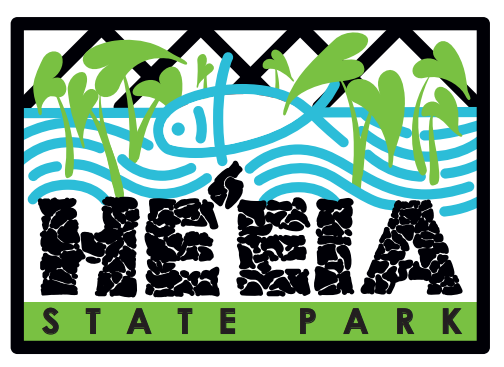Heʻeia State Park Through Time
Heʻeia State Park has gone through significant changes over the course of its storied history. A reverse chronological timeline of the park's history from 1832 to the present is below.
Our Timeline
- 2010
- Kama‘āina Kids, a non-profit educational organization, is granted a 25 year lease to manage the Heʻeia State Park.
- 1982- 2010
- Friends of Heʻeia, a non-profit educational organization, is granted a 25 year lease, and an additional 3 year extension, to manage the Heʻeia State Park.
- 1980
- Friends of He‘eia, acquires the two main buildings at Ke'alohi Point.
- 1976
- The state of Hawai‘i acquires the 14 acre land at Ke'alohi Point to be used as a state park after an outcry from the community to stop development.
- 1963
- Ulumau Village, a Hawaiian cultural center, moves from Ala Moana Park to Ke'alohi Point in Heʻeia.
- 1960
- Bishop Trustee signs an agreement in principle to developer Thomas F. McCormack. Plans were underway to develop a marina type development on the makai side of Heʻeia, current location of the Heʻeia State Park.
- 1949
- A plan was presented to the City and County of Honolulu to change the zoning area of Heʻeia from agriculture to urban for marina and residential use. In 1960, Bishop Estate signed an agreement with Thomas McCormack to develop lands in Heʻeia.
- 1941
- The military radio intercept station in Heʻeia, Station H, intercepts Japanese fleet Admiral Yamamoto's message prior to the World War II Pearl Harbor attack.
- 1942
- United States Military establishes the He‘eia Combat Training Area.
- 1939 and 1945
- Dredging of the Bay was done to accommodate small boat landings, piers, and wharfs. The dredged material was used for landfill at the Kane‘ohe Naval Air Station (now Kāne‘ohe Marine Corps Air Station). Between 1946 and 1948, nine fishponds on the south side of Kāne‘ohe Bay (total area of almost 80 acres) were filled with dredged materials for urban development (Kelly, 1993).
- 1917
- Heʻeia Sugar Company leases an additional 600 acres to Libby, McNeill & Libby.
- 1912
- Heʻeia Sugar Company and Kāne’ohe Ranch Company agree to lease 1,000 acres of land for pineapple growing to Libby, McNeill & Libby.
- 1905
- Cattle Ranch in Heʻeia run by George W. Rowan.
- 1903
- Heʻeia Sugar Company closes. Sugar, taro, rice main cropsgrown.
- 1878-1903
- Heʻeia Sugar Company (also called Heʻeia Agricultural Co. Ltd.)
Ancient heiau (ancient place of worship), Kalae‘ula’ula, at Keʻalohi point was destroyed. Sugar mill constructed in its place.
- 1883
- A railroad was installed for the sugar company.
- 1878
- Sugar mill completed on the estate of Mr. J. McKeague at Heʻeia.
- 1848
- Under the Mahele of 1848, the Ahupua‘a* of Heʻeia, which includes an eighty-eight (88) acre walled fishpond, went to Abner Paki, the father of Bernice Pauahi Bishop. Taro cultivation was predominant crop.
- 1832
- Abner Paki was acting in the capacity of konohiki** of the Ahupua‘a of Heʻeia, and perhaps before that.
* Ahupuaʻa - Land division usually extending from the uplands to the sea.
** Konohiki - headman of an ahupua'a land division under the chief.
